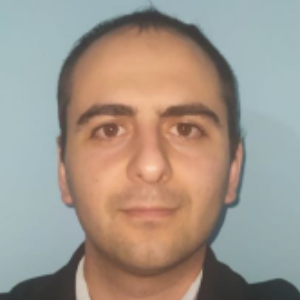Title : Stochastic analysis of cell encapsulation in picoliter droplets in a microfluidic system designed for 3D cell culture
Abstract:
3D cell cultures are superior in resembling the natural physiological settings of tissues compared to 2D cell cultures that limit mass transport and cell-cell interactions to two directions. The number of cells encapsulated in droplets can be regulated by controlling the cell concentration and flow rates in two-phase microfluidic systems and can be restricted to only a few cells. We designed a simple continuous microfluidic platform that allows for better monitoring of cell behavior in ultra-small picocapsules that provide the medium for proliferation of a small number of encapsulated cells. The two-phase microfluidic system involves a dynamic stage, where cells are encapsulated in aqueous spherical picocapsules, and a static stage, where these capsules are stabilized for 3D cell culture. We used the standard soft lithography methods to produce a completely transparent microfluidic device made of polydimethylsiloxane (PDMS) allowing for the monitoring and analysis of the droplets and the cells on an inverted microscope with a fast camera and imaging software. We used soybean oil saturated with water as the continuous phase and cell medium as the dispersed aqueous phase. In the dynamic stage, we optimized the flow conditions for a flow focusing device with an x-junction of 100 micron width. The likelihood of encapsulating cells in a droplet depends on the flow rate of each phase, the size of the droplets and the size of the cells, the concentration of the cell suspension, and the other unknown factors during the course of encapsulation rendering it as a stochastic process. We employed the Poisson distribution to analyze the number of encapsulated cells per droplet at different flow rates. In the static stage, aqueous picocapsules with cells are stabilized in wells with 1000 micron depth and 500 micron diameter. Droplets remained stable in these wells, which is the first step for 3D cell culture. We demonstrated that this design in its premature state can be further improved and used for 3D culture of cells in small numbers. This study is supported by TUBITAK 1001 Project 214M323 and Hacettepe University BAB grant.
Audience Take Away:
- We provided systematic information for cell encapsulation in a two-phase microfluidic design.
- We analyzed cell encapsulation as a stochastic process and showed the use of Poisson distribution with actual data.
- We developed a microwell design to host uniform aqueous picocapsules with cells.
- We presented a 3D cell culture platform that can be used for monitoring response of cells to nano drug delivery systems.
- Researchers that are not familiar with microfluidic



